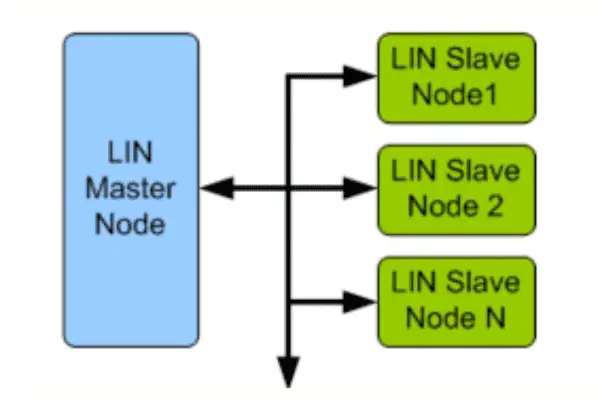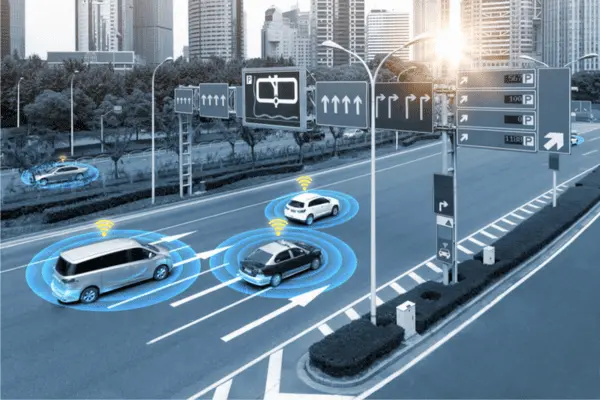Introduction to VCU Communication Protocols
The revolution of the automobile industry has ushered in an era of innovation, with smart vehicles, electrification, and autonomous driving becoming the norm. At the heart of these improvements are Vehicle Control Units (VCUs), the complex “brains” that assure modern vehicles’ maximum functioning. VCUs provide an unmatched driving experience by coordinating many systems and making decisions in real-time.
Communication protocols are important to VCU operations. These protocols allow for flawless data flow between the vehicle’s many components and external systems, resulting in exact coordination and safety. This blog delves into the vital role of VCU communication protocols, their applications in smart vehicles, and the upcoming breakthroughs influencing the automotive communication ecosystem.
The role of communication protocols in VCUs
VCUs play an important function in modern automobiles by acting as decision-making centers. They collect data from a variety of sensors and modules, process it, and send commands to the appropriate components, such as the engine, actuators, and stability systems. This orchestration is based on communication protocols, which serve as defined guidelines for sending data effectively and reliably.
Communication protocols are essential for:
- Real-time decision-making: VCUs assess data including wheel speed, engine temperature, and steering angles to improve safety and performance.
- System integration: These protocols enable communication between various in-vehicle systems, including powertrain components, brake systems, and entertainment units.
- External interaction: VCUs use protocols to communicate with external systems such as GPS, cloud-based services, and vehicle-to-everything (V2X) networks, providing a comprehensive smart driving experience.
Common Communication Protocols for Automotive Applications
Several communication protocols are used to satisfy the various requirements of current automobile systems. Here is a list of the most often-used ones:
1. Controller Area Network (CAN)
The Controller Area Network (CAN) protocol is an essential component of automotive communication. CAN is well-known for its dependability and resilience, allowing both high- and low-speed data transmission between electronic control units (ECUs).
Key applications include powertrain management, anti-lock braking, and infotainment systems.
Technical Specifications: Runs on a two-wire bus system, ensuring fault tolerance and great dependability.
Benefits include scalability and adaptability among vehicle systems.
2. Local Interconnection Network (LIN)
The Local Interconnect Network (LIN) is a low-cost protocol developed for applications that require slower data speeds and less real-time responsiveness.
Interior features include window controls, seat adjustments, and ambient lighting.
Technical Specifications: Uses a single-wire communication system for simplicity and economy.
Benefits include improved energy efficiency and reduced complexity.

3) FlexRay
FlexRay is a high-speed protocol designed to suit the needs of automobile systems that must be both safe and timely.
Key applications include adaptive cruise control, active suspension, and electric power steering.
Technical Specifications: Supports deterministic data transmission via fault-tolerant dual-channel connectivity.
Benefits include increased bandwidth and reliability for modern systems.
4. Automotive Ethernet
As a result of the increasing data demands of smart vehicles, the use of Ethernet for in-vehicle communication has become essential.
Key applications include advanced driver assistance systems (ADAS), high-definition cameras, and infotainment.
Technical features include high bandwidth and compatibility for sophisticated data networks.
Benefits include scalability and simple connection with cloud and external services.
Challenges and Innovations in VCU Communication Protocols.
While communication protocols have evolved tremendously, problems remain that must be overcome to fulfill the changing needs of smart vehicles.
1. Security concerns.
As automobiles become more linked, consequently, the potential of hacks increases. Therefore, to protect data integrity and ensure system safety, strong security measures must be in place.
For example, encryption, authentication, and intrusion detection systems are all possible solutions.
2. Scalability.
With the increasing number of sensors, actuators, and ECUs in automobiles consequently, there is a growing need for scalable communication protocols that can efficiently handle the rising data volume
Solutions: To meet scalability requirements, therefore, it is essential to use high-bandwidth technologies such as Ethernet and 5G.
3. Standardization.
The automobile ecosystem consists of numerous manufacturers, suppliers, and technology providers. Therefore, to achieve system compatibility, standardization is essential.
Solutions: With the increasing number of sensors, actuators, and ECUs in automobiles, as a result, there is a growing need for scalable communication protocols that can efficiently handle the rising data volume. In response to this challenge, collaborative efforts are underway to develop universal protocol compatibility standards, thereby ensuring seamless integration across the automotive ecosystem.
4. Over-the-air (OTA) updates.
Remote upgrades of VCU firmware and software are critical not only for maintaining functionality but also for addressing security concerns effectively.
Solutions: To enhance efficiency and user experience, it is essential to create secure OTA systems that not only speed up updates but also increase user convenience.

Future Trends for VCU Communication Protocols
The advancement of automobile technology is setting the path for groundbreaking developments in VCU communication. Consequently, several major trends are emerging:
1. Increased Ethernet adoption
Due to its scalability and high bandwidth, Ethernet is ideally suited for use in modern vehicle designs, enabling faster data transmission and more efficient communication between onboard systems.
Impact: Support for data-intensive systems such as real-time diagnostics, ADAS, and in-car entertainment.
2. 5G connectivity.
The introduction of 5G networks will transform VCU communication by enabling ultrafast, low-latency data transmission.
Impact: As the automotive industry continues to evolve, there is an increasing focus on improving support for V2X communication, autonomous driving, and real-time updates. Consequently, these advancements play a crucial role in enhancing vehicle connectivity and ensuring greater safety.
3. Time-sensitive network (TSN)
TSN, an Ethernet enhancement, plays a crucial role in enabling deterministic communication. As a result, it is ideal for time-critical applications where reliability and precision are essential.
Impact: Reliable performance for ADAS and autonomous systems is achieved by effectively prioritizing critical data packets. This ensures seamless operation and enhances overall system safety.
4. Cloud Integration.
The integration of VCUs with cloud services not only enhances vehicle functionality but also enables sophisticated features such as predictive maintenance and data-driven analytics, improving overall efficiency and performance.
Impact: As a result, this progress leads to improved vehicle performance, more tailored user experiences, and enhanced fleet management capabilities. Ultimately, it transforms the way vehicles operate and interacts with their environments.

Conclusion
VCU communication protocols are the foundation of smart vehicle ecosystems, allowing for easy data sharing, system integration, and external connectivity. As the automotive industry embraces electrification, autonomous driving, and connected mobility, the value of scalable and secure communication protocols cannot be understated.
VCU communication’s future lies in the adoption of high-bandwidth technologies such as Ethernet, developments such as TSN, and the introduction of 5G networks. By tackling current difficulties such as security and scalability, as well as embracing new advances, VCUs will continue to play an important role in designing a safer, smarter, and more connected automotive sector.
Contact us at info@dorleco.com if you need a trustworthy VCU supplier or want to discuss potential partnerships in developing unique VCU solutions. Let us drive the future together!


